
Them and Us: How Immigrants and Locals Can Thrive Together
by
Philippe Legrain
Published 14 Oct 2020
Popular narratives tend to centre on individual geniuses coming up with incredible insights in isolation – and those few are disproportionately immigrants. But in fact, most ideas come from creative collisions between people. Take the discovery of DNA, the code of life. English physicist Francis Crick and American biologist James Watson concluded that it consisted of a three-dimensional double helix, based on the earlier discovery of DNA by a Swiss scientist, Friedrich Miescher, developed by Phoebus Levene, a Lithuanian-born American biochemist, and Erwin Chargaff, an Austro-Hungarian one.2 Or consider DeepMind, a London-based company doing groundbreaking practical research on artificial intelligence.
…
, Migration Policy Debates 19, OECD, May 2019. https://www.oecd.org/migration/mig/migration-policy-debates-19.pdf 77 The top ten countries in terms of their attractiveness to highly educated workers, before factoring in visa rules, are the US, Australia, New Zealand, Canada, Sweden, Ireland, Switzerland, Norway, the Netherlands and the UK. 78 The top ten most attractive OECD countries to highly educated workers are Australia, Sweden, Switzerland, New Zealand, Canada, Ireland, the US, the Netherlands, Slovenia and Norway. 10 Diversity Dividend 1 Chris Bascombe, ‘Jurgen Klopp delights in diverse personalities of Liverpool’s record-hunting defensive bedrock’, Telegraph, 4 April 2019. https://www.telegraph.co.uk/football/2019/04/04/jurgen-klopp-delights-diverse-personalities-liverpools-record/ 2 Leslie Pray, ‘Discovery of DNA structure and function: Watson and Crick’, Nature Education, 1:1, 2008. https://www.nature.com/scitable/topicpage/discovery-of-dna-structure-and-function-watson-397/ 3 David Rowan, ‘DeepMind: inside Google’s super-brain’, Wired, 22 June 2015. https://www.wired.co.uk/article/deepmind 4 Ernest Miguelez, Julio Raffo, Christian Chacua, Massimiliano Coda-Zabetta, Deyun Yin, Francesco Lissoni, Gianluca Tarasconi, ‘Tied in: The Global Network of Local Innovation’, WIPO Economic Research Working Paper 58, November 2019. https://www.wipo.int/publications/en/details.jsp?
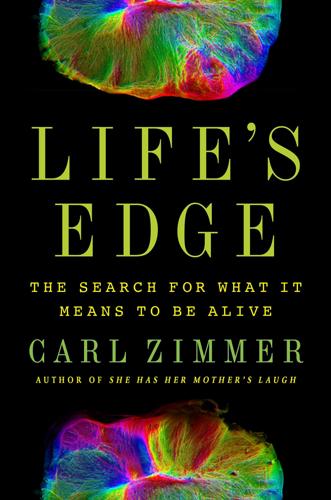
Life's Edge: The Search for What It Means to Be Alive
by
Carl Zimmer
Published 9 Mar 2021
See also vital force/vitalism electrons and electricity and alkaline vent theory, 247 and astrobiology/exobiology research, 265 and Burke’s radiobes, xv and definitions of life, 180–82 discovery of the electron, x, 39 and DNA-reading technology, 229–31 electron microscopes, 207, 256 and flight of bats, 95 and mutation research, 186 and neurons, 4, 7 and organoid research, 13, 15 and polycyclic aromatic hydrocarbons, 236 and superconductivity, 286–87 and vitalism debate, 148–49 elk kelp, 5–6 Ellis, Emory, 187 Elsasser, Walter, 196–97 embryonic development, 23–32, 51, 98, 171 Emergence of Life, The (Burke), xviii emergent properties, 198 Employment for the Microscope (Baker), 45 Enceladus, 260–66 ensoulment, 21 entropy, 190 enzymes and alkaline vent theory, 248 and Amazon molly reproduction, 214–15 and Burke’s radiobes, xv and carnivorous plants, xviii and cellular metabolism, 174 and discovery of DNA, 193 and genetic mutations, 113–14 and metabolic function, 71–72, 74, 82, 87–88 and mitochondria, 212 and origins of life theories, 219, 228, 244 and red blood cells, 212 and ribozymes, 232 and RNA-based drugs, 248–49 and theoretical models of life, 284 and viruses, 207 and vitalism debate, 169–73 and volcanic hot springs research, 239 and yeast cells, 184 Eozoön (dawn animal), 159, 166 erythrocytes, 211–12 Escherichia coli, 115 ether, 172–73 eukaryotes, 113 evolution and Amazon mollies, 213–14 and assembly theory, 288, 291 and astrobiology/exobiology research, 256–57, 257–58, 279 and autocatalytic sets, 286 and awareness of life and death, 39–41 of bats, 96 and Darwin’s research, 157 and definitions of life, 270–71 and Erasmus Darwin, 146 and Gilbert’s RNA research, 233 and hallmarks of life, 124 and hibernation, 94 and human origins, 37 and maple reproduction, 108 and medical research, 111–12 and metabolic function, 67 and natural selection, 114–16, 119, 122–23, 157, 208, 270 and the ocean floor, 157–60 and origins of life theories, 244 and prebiotic chemistry, 224 and Pseudomonas research, 112, 116–24 and radiobes, 167 and recognition of life, 19 and role of mutation, 114, 115–16, 199–200 and single-cell life, 112–13 theory and mechanics of, 113–15 and viruses, 204, 209, 211 and vitalism debate, 172–73 and volcanic hot springs research, 239 exoplanets and exobiology, 199–200, 251–52, 258–59, 277, 290.
…
See also astrobiology external memory, 83–84 fermentation, 168–70 fertilization, 107 Feynman, Richard, 287 51 Pegasi, 258 fish reproduction, 213–15, 270 flight, 94–95, 283 Forbes, James, 35 Forterre, Patrick, 209–10 Fortnightly Review, 161–62 fossils and fossil record, 40, 115, 159, 166, 173, 245, 256, 258, 277 Frankenstein (Shelley), 147–48 Franklin, Rosalind, 193–95, 195–96 fruit flies, 185, 219 fungi, 46, 99–101 games, defining, 274 Gao, Richard, 13 Garnier, Simon, 78–83, 87–89 genes and genetics and Amazon mollies, 214–15 and assembly theory, 289–90, 292 and astrobiology/exobiology research, 262, 278 and autocatalytic sets, 284–86 and characteristics of life, 5 and definitions of life, 222, 269–70, 272 and discovery of DNA, 193–95, 195–200 and DNA-reading technology, 230–31, 241–42 and electric charge within cells, 181 and embryonic development, 27–32 genetic disorders, 7–8, 30, 112 and hibernation, 94, 101 and maple trees, 103–10 and metabolic function, 71–76 and mitochondria, 212–13 and mutation research, 184–88 and organic molecules in meteorites, 232–35 and organoid research, 10 of polyps, 133 and prebiotic chemistry, 224–25 and primitive cells, 226–30 and protocells, 243–45 and Pseudomonas research, 112–24 and red blood cells, 212 and RNA-based drugs, 248–49 and Schrödinger’s aperiodic crystals, 188–90 and scientific education, xviii and slime molds, 81, 88 and theoretical models of life, 282, 283–86 and viruses, 204–5, 208–11 and vitamin C production, 175 See also DNA; evolution George, Robert, 27 George III, King of Great Britain, 142 Ghadiri, Reza, 285 Gilbert, Walter, 232–33, 239 global warming, 259 glycine, 217 Goldin, Daniel, 257 Goodall, Jane, 37–38 Goulon, Maurice, 50–51 Green, Sara, 272 guanine, 71, 231 habitable environments, 258–60.
…
Supreme Court, 24 valine, 217 Vallortigara, Giorgio, 19 Van Leeuwenhoek, Antonie, 43, 48, 206 Varela, Francisco, 283 vasopressin, 59 ventilators, 51–52, 55, 60 Venus, 251, 252 Viking 1, 253–55, 257 viruses bacteriophages, 122–23, 187, 206, 211 and definitions of life, 203–11, 269, 270, 273–75 and DNA sequencing, 242–43 liposomes in vaccines, 226 and mutation research, 187 and organoid research, 11–12 origins of, 215 polio, 50, 206 and prebiotic chemistry, 224–25 SARS-CoV-2, 204–9 virocells, 209–10 virome, 211 vital force/vitalism and abortion debate, 23 and alkaline vent theory, 247 and autocatalytic sets, 285 and cell function, 169–73 and discovery of DNA, 195, 196–98 and irritability, 145 and organic/inorganic divide, 150 and origins of life theories, 219 and protoplasm, 161–62 and Shelley’s Frankenstein, 147–49 and Urschleim, 158 vital tripod, 42, 49–51 vitamin C, 175 vivisection experiments, 42–43, 138 volcanic hot springs research, 216–17, 236–39, 243–44, 247 Voytek, Bradley, 13 Waddington, Conrad, 198 Walker, Sara, 287–92 Washington hawthorn, 102 Washington Post, 25 water, 46–47, 281, 282 Watson, James, 193–95 wave functions, 188 Westall, Frances, 271 What Is Life?
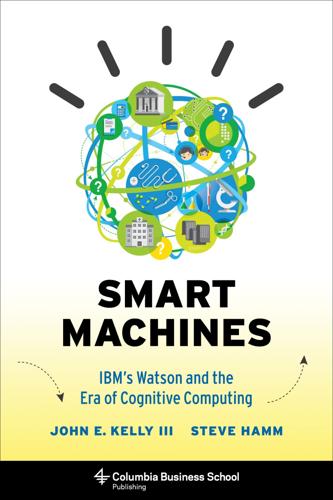
Smart Machines: IBM's Watson and the Era of Cognitive Computing (Columbia Business School Publishing)
by
John E. Kelly Iii
Published 23 Sep 2013
We believe, though, that the most important effect of these technologies will be in assisting people to do what they are unable to do today, vastly expanding the problems we can solve and creating new spheres of innovation for every industry. And like previous eras of computing, this will take a tremendous amount of innovation over decades. “These new capabilities will affect everything. It will be like the discovery of DNA,” predicts Ralph Gomory, a pioneer of applied mathematics who was director of IBM Research in the 1970s and 1980s and later head of the Alfred P. Sloan Foundation.6 HOW COGNITIVE SYSTEMS WILL HELP US BE SMARTER As smart as human beings are, there are many things that we can’t do or simply can’t process in time to affect the outcome of a situation.

The Linguist: A Personal Guide to Language Learning
by
Steve Kaufmann
Published 15 Jan 2003
Samuel Beckett, an Irishman, wrote one of the prominent plays of modern French literature, Waiting for Godot. There are many outstanding nonEuropean virtuosos performing European classical music. Many non-Asians dedicate themselves with success to Asian arts or traditional sports. The Fundamental Similarity of Human Beings With the discovery of DNA, we now understand what the Taoists knew intuitively: all is one. Human beings are remarkably uniform and have a common origin. As Richard Dawkins brilliantly explains in River Out of Eden, our genes have been handed down to us by those of our ancestors who survived long enough to produce children.

Think Like a Rocket Scientist: Simple Strategies You Can Use to Make Giant Leaps in Work and Life
by
Ozan Varol
Published 13 Apr 2020
For X-rays, see Alan Chodos, ed., “November 8, 1895: Roentgen’s Discovery of X-Rays,” This Month in Physics History series, American Physical Society News 10, no. 10 (November 2001), www.aps.org/publications/apsnews/200111/history.cfm. For DNA, see Leslie A. Pray, “Discovery of DNA Structure and Function: Watson and Crick,” Nature Education 1, no. 1 (2008): 100, www.nature.com/scitable/topicpage/discovery-of-dna-structure-and-function-watson-397. For oxygen, see Julia Davis, “Discovering Oxygen, a Brief History,” Mental Floss, August 1, 2012, http://mentalfloss.com/article/31358/discovering-oxygen-brief-history. For penicillin, see Theodore C.
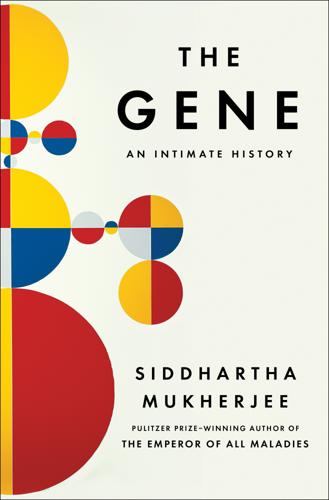
The Gene: An Intimate History
by
Siddhartha Mukherjee
Published 16 May 2016
And when an organism matured, it generated male or female semen again—transforming material back to message. In fact, rather than Pythagoras’s triangle, there was a circle, or a cycle, at work: form begat information, and then information begat form. Centuries later, the biologist Max Delbrück would joke that Aristotle should have been given the Nobel Prize posthumously—for the discovery of DNA. But if heredity was transmitted as information, then how was that information encoded? The word code comes from the Latin caudex, the wooden pith of a tree on which scribes carved their writing. What, then, was the caudex of heredity? What was being transcribed, and how? How was the material packaged and transported from one body to the next?
…
Moore Jr., Wise Sayings: For Your Thoughtful Consideration (Bloomington, IN: AuthorHouse, 2012), 89. “The Fess”: “The Oswald T. Avery Collection: Biographical information,” National Institutes of Health, http://profiles.nlm.nih.gov/ps/retrieve/Narrative/CC/p-nid/35. No one knew or understood the chemical structure: Robert C. Olby, The Path to the Double Helix: The Discovery of DNA (New York: Dover Publications, 1994), 107. Swiss biochemist, Friedrich Miescher: George P. Sakalosky, Notio Nova: A New Idea (Pittsburgh, PA: Dorrance, 2014), 58. extremely “unsophisticated” structure: Olby, Path to the Double Helix, 89. “stupid molecule”: Garland Allen and Roy M. MacLeod, eds., Science, History and Social Activism: A Tribute to Everett Mendelsohn, vol. 228 (Dordrecht: Springer Science & Business Media, 2013), 92.
…
The Mechanism of Mendelian Heredity. New York: Holt, 1915. ———. The Physical Basis of Heredity. Philadelphia: J. B. Lippincott, 1919. Müller-Wille, Staffan, and Hans-Jörg Rheinberger. A Cultural History of Heredity. Chicago: University of Chicago Press, 2012. Olby, Robert C. The Path to the Double Helix: The Discovery of DNA. New York: Dover Publications, 1994. Paley, William. The Works of William Paley. Philadelphia: J. J. Woodward, 1836. Patterson, Paul H. The Origins of Schizophrenia. New York: Columbia University Press, 2013. Portugal, Franklin H., and Jack S. Cohen. A Century of DNA: A History of the Discovery of the Structure and Function of the Genetic Substance.
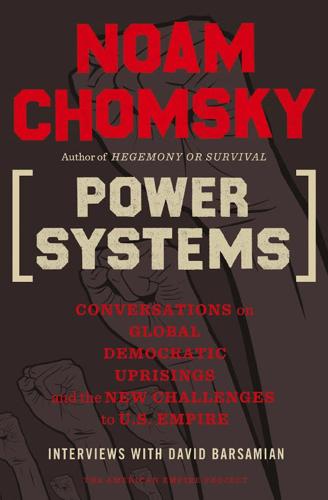
Power Systems: Conversations on Global Democratic Uprisings and the New Challenges to U.S. Empire
by
Noam Chomsky
and
David Barsamian
Published 1 Nov 2012
In Science, the journal of the American Association for the Advancement of Science, Bruce Alberts, a biochemist, had a series of editorials on science education.18 What he points out is quite interesting. He says science education is increasingly being designed with the effect of killing any interest in science. If you are in college, maybe you have to memorize a bunch of enzymes or something. If you are in elementary school, you memorize the periodic table. When you study the discovery of DNA, you’re just taught what scientists already discovered. You memorize the fact that DNA is a double helix. Science is being taught in a way that kills any joy in science, gives you no sense of what discovery is. It’s the opposite of Weisskopf’s view that it matters what you discover, not what you cover.
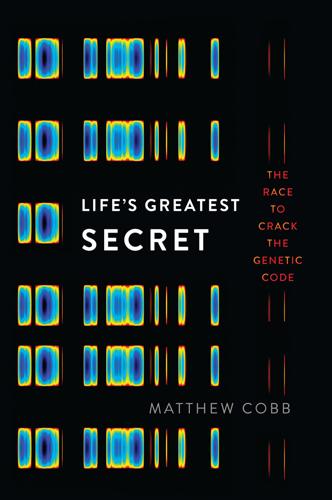
Life's Greatest Secret: The Race to Crack the Genetic Code
by
Matthew Cobb
Published 6 Jul 2015
H. et al., ‘Programmable RNA recognition and cleavage by CRISPR/Cas9’ Nature, vol. 516, 2014, pp. 263–6. Olby, R., ‘Schrödinger’s problem: What is life?’, Journal of the History of Biology, vol. 4, 1971, pp. 119–48. Olby, R., ‘Avery in retrospect’, Nature, vol. 238, 1972, pp. 295–6. Olby, R., The Path to the Double Helix: The Discovery of DNA, New York, Dover, 1994. Olby, R., ‘Quiet debut for the double helix’, Nature, vol. 421, 2003, pp. 402–5. Olby, R., Francis Crick: Hunter of Life’s Secrets, Plainview, Cold Spring Harbor Laboratory Press, 2009. Olby, R. and Posner, R., ‘An early reference to genetic coding’, Nature, vol. 215, 1967, p. 556.
…
Poczai, P., Bell, N. and Hyvönen, J., ‘Imre Festetics and the Sheep Breeders’ Society of Moravia: Mendel’s forgotten “research network”‘, PLoS Biology, vol. 12, 2014, article e1001772. Pollister, A. W., Hewson, S. and Alfert, M., ‘Studies on the desoxypentose nucleic acid content of animal nuclei’, Journal of Cellular Physiology, vol. 38 (Suppl. 1), 1951, pp. 101–19. Pollock, M. R., ‘The discovery of DNA: An ironic tale of chance, prejudice and insight’, Journal of General Microbiology, vol. 63, 1970, pp. 1–20. Polyanski, A, A., Hlevnjal, M. and Zagrovic, B., ‘Proteome-wide analysis reveals clues of complementary interactions between mRNAs and their cognate proteins as the physicochemical foundation of the genetic code’, RNA Biology, vol. 10, 2013, pp. 1248–54.
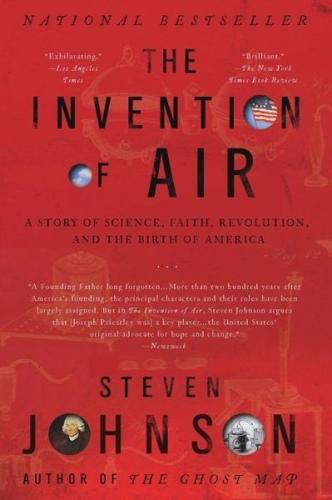
The Invention of Air: A Story of Science, Faith, Revolution, and the Birth of America
by
Steven Johnson
Published 26 Dec 2008
In most cases when a fundamental force in the universe is first formally understood by science, there is a lag between that understanding and the emergence of popular technologies that depend on the science for their existence. Newton’s law of universal gravitation didn’t immediately spawn a craze for gadgets built on his equations. Even in today’s accelerated world, it took at least two generations for Watson and Crick’s discovery of DNA to engender mainstream technologies such as DNA tests. But with electricity, the two phenomena overlapped: you had the discovery of one of nature’s most fundamental forces, and you had an immediate flood of mesmerizing parlor tricks. You had awe-inspiring scientific genius, and you had gadgets, all in one swoop.
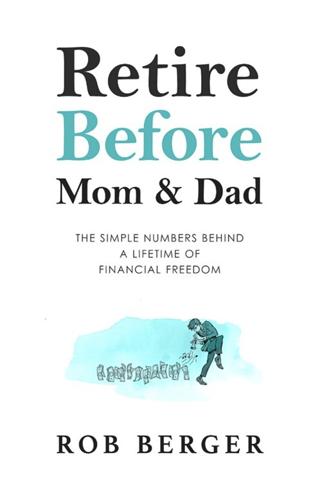
Retire Before Mom and Dad
by
Rob Berger
Published 10 Aug 2019
Use one-half of your tax refund to increase your Saving Rate. * * * 38 I should hasten to add that some would disagree with this claim, or at least be quick to give credit to Friedrich Miescher, Phoebus Levene, Erwin Chargaff, Rosalind Franklin and Maurice Wilkins. https://www.nature.com/scitable/topicpage/discovery-of-dna-structure-and-function-watson-397 39 https://hbr.org/2011/05/the-power-of-small-wins 3 Key Concepts Small wins enable us to focus on goals that are achievable in a reasonable amount of time. Called The Progress Principle, seeing regular improvements, however small, builds our confidence and encourages us to keep moving toward bigger goals.
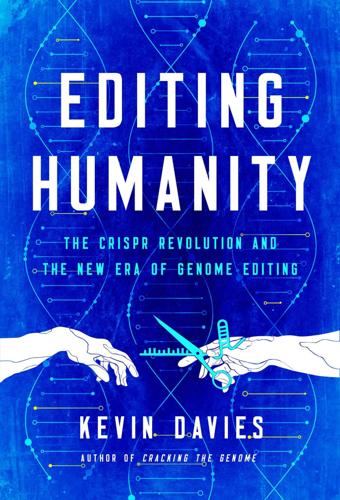
Editing Humanity: The CRISPR Revolution and the New Era of Genome Editing
by
Kevin Davies
Published 5 Oct 2020
All of man’s recorded history took place as an inch was deposited. All of organized science a millimeter. All we know of genetics, a few tens of microns. If we remember that timescale, then what vision can seem too long?”14 Then he said this: The dramatic advances of the past few decades have led to the discovery of DNA and to the decipherment of the universal hereditary code, the age-old language of the living cell. And with this understanding will come control of processes that have known only the mindless discipline of natural selection for two billion years. And now the impact of science will strike straight home, for the biological world includes us.
…
Gasiunas et al., “Cas9–crRNA ribonucleoprotein complex mediates specific DNA cleavage for adaptive immunity in bacteria,” Proceedings of the National Academy of Sciences 109, (2012): E2579–E2586, https://www.pnas.org/content/109/39/E2579?iss=39. 18. Sarah Zhang, “The Battle Over Genome Editing Gets Science All Wrong,” WIRED, April 18, 2015, https://www.wired.com/2015/10/battle-genome-editing-gets-science-wrong/. 19. R. Dahm, “Friedrich Miescher and the Discovery of DNA,” Developmental Biology 278, (2005); 274–288, https://doi.org/10.1016/j.ydbio.2004.11.028. 20. Stuart Firestein, “Fundamentally Newsworthy,” The Edge.org, 2016, “Youtube, https://www.edge.org/response-detail/26718. 21. TEDx Talks, “O(ú)pravy lidské DNA | Martin Jínek | TEDx Třinec,” YouTube video, 21:07, last viewed June 26, 2020, https://www.youtube.com/watch?
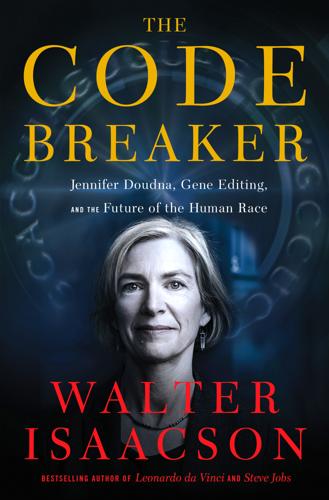
The Code Breaker: Jennifer Doudna, Gene Editing, and the Future of the Human Race
by
Walter Isaacson
Published 9 Mar 2021
Driven by a passion to understand how nature works and by a competitive desire to turn discoveries into inventions, she would help make what Watson, with his typical grandiosity cloaked in the pretense of humility, would later tell her was the most important biological advance since the double helix. Darwin Mendel CHAPTER 2 The Gene Darwin The paths that led Watson and Crick to the discovery of DNA’s structure were pioneered a century earlier, in the 1850s, when the English naturalist Charles Darwin published On the Origin of Species and Gregor Mendel, an underemployed priest in Brno (now part of the Czech Republic), began breeding peas in the garden of his abbey. The beaks of Darwin’s finches and the traits of Mendel’s peas gave birth to the idea of the gene, an entity inside of living organisms that carries the code of heredity.1 Darwin had originally planned to follow the career path of his father and grandfather, who were distinguished doctors.
…
After fifty years, he has been banished from meetings, and the oil portrait of him removed. He is now sentenced to internal exile, living with his wife, Elizabeth, in elegant but tortured isolation at the northern end of the campus in a pale Palladian-style mansion called Ballybung. His troubles began in 2003, when he marked the fiftieth anniversary of his co-discovery of DNA’s structure by giving an interview for a documentary on PBS and the BBC. Genetic engineering should someday be used to “cure” people who have low intelligence, he said. “If you really are stupid, I would call that a disease.” It reflected his deep belief, perhaps fostered by pride in his seminal scientific discovery as well as the daily angst of living with his schizophrenic son, Rufus, in the power of DNA to explain human nature.
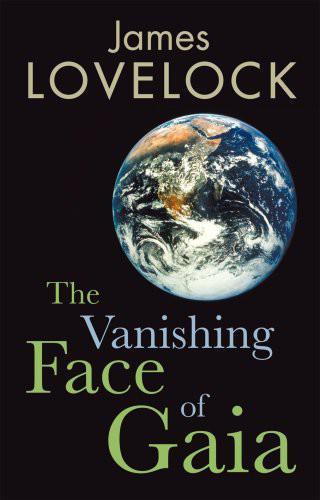
The Vanishing Face of Gaia: A Final Warning
by
James E. Lovelock
Published 1 Jan 2009
So the Gaia concept was born at the peak of the New Age – contemporary with Woodstock and the Beatles, which perhaps accounts for why so many scientists still regard it as part of the plethora of New Age nonsense which was around at the time. But not all of us were hippies with our rock chicks. There was the space programme that culminated with the moon landings, a surge of planetary exploration by orbiting satellites, and the discovery of DNA and the genetic code. The 1960s saw the near catastrophic confrontation between the superpowers over missiles sited on Cuba, and the end of segregation in the USA and much violent political change; it was a time of painful conflict between old and new views of the world. Apart from the coincidence of its birth with the New Age, Gaia science was far too revolutionary an idea to be immediately accepted, and I should not have expected this until a substantial quantity of evidence and theory had been gathered; it was not in fact until thirty‐six years later, in 2001, that the concept received partial public recognition.
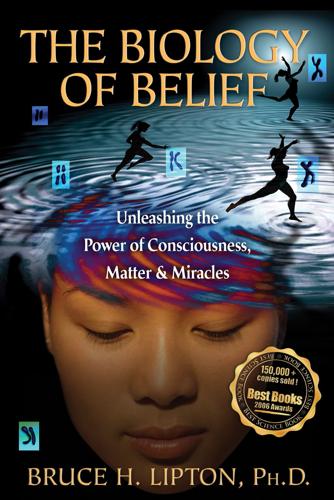
The Biology of Belief: Unleashing the Power of Consciousness, Matter & Miracles
by
Bruce H. Lipton
Published 1 Jan 2005
Once it was known that you needed nothing other than DNA to pass on traits, the DNA molecule became a scientific superstar. It was now left to Watson and Crick to unravel the structure and function of that superstar molecule. DNA molecules are long and threadlike. They are made from four nitrogen-containing chemicals called bases (adenine, thymine, cytosine, and guanine, or A, T, C, and G). Watson and Crick’s discovery of DNA’s structure led to the fact that the sequence of the A, T, C, and G bases in DNA spells out the sequence of amino acids along a protein’s backbone (Watson and Crick 1953). Those long strings of DNA molecules can be subdivided into single genes, segments that provide the blueprint for specific proteins.

The Soul of Wealth
by
Daniel Crosby
Published 19 Sep 2024
Financial research is often murky with crisscrossing factors at play. But the evidence is unambiguous: Women are fantastic investors, and we would all benefit by them having a seat at the table, no matter what table we are talking about. * * * 195 Matthew Cobb and Nathaniel Comfort, “What Rosalind Franklin truly contributed to the discovery of DNA’s structure,” Nature (April 25, 2023). 196 Reed Jones, “Sexism in Science: Was Rosalind Franklin Robbed of a Nobel Prize?” LMU This Week, Loyola Marymount University (March 22, 2021). 197 Dr. Daniel Crosby and Lara Coviello, “Why Women Are The Ultimate Behavioral Investors,” FA (August 24, 2022). 198 R.
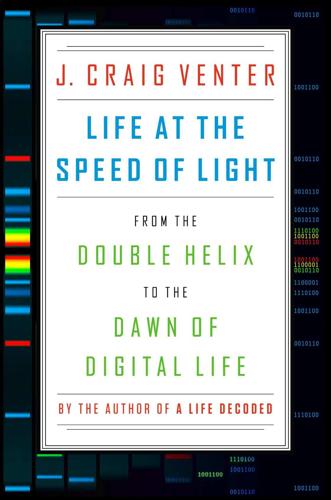
Life at the Speed of Light: From the Double Helix to the Dawn of Digital Life
by
J. Craig Venter
Published 16 Oct 2013
I believed that with the creation of synthetic life from chemicals, we had finally put to rest any remaining notions of vitalism once and for all. But it seems that I had underestimated the extent to which a belief in vitalism still pervades modern scientific thinking. Belief is the enemy of scientific advancement. The belief that proteins were the genetic material set back the discovery of DNA as the information-carrier, perhaps by as much as half a century. During the latter half of the twentieth century we came to understand that DNA was Schrödinger’s “code-script,” deciphered its complex message, and began to figure out precisely how it guides the processes of life. This epic adventure in understanding would mark the birth of a new era of science, one that lay at the nexus of biology and technology. 3 Dawn of the Digital Age of Biology If we are right, and of course that is not yet proven, then it means that nucleic acids are not merely structurally important but functionally active substances in determining the biochemical activities and specific characteristics of cells and that by means of a known chemical substance it is possible to induce predictable and hereditary changes in cells.

12 Bytes: How We Got Here. Where We Might Go Next
by
Jeanette Winterson
Published 15 Mar 2021
Biohack excitement is still a geeky-guy homerun. The websites, the reading material, the vision, the propaganda, are overwhelmingly male-authored and male-centric. The same is true of transhumanism, and its follow-up, post-humanism. The Palo Alto Longevity Prize homepage includes Watson and Crick, re: the discovery of DNA, but makes no mention of Rosalind Franklin, whose crucial X-ray, photo 51, was central to the breakthrough. Things change. Things don’t change. There are exceptions. Scholar and futurist Donna J. Haraway wrote A Cyborg Manifesto back in 1985. Like the late, great writer Ursula K. Le Guin, Haraway believed that women should embrace the alternative human future.

Protocol: how control exists after decentralization
by
Alexander R. Galloway
Published 1 Apr 2004
Or to take another example, the flimsy, cross-platform nature of HTML is precisely what gives it its power as a protocological standard. Like Empire, if protocol dared to centralize, or dared to hierarchize, or dared to essentialize, it would fail. Further to these many theoretical interventions—Foucault, Deleuze, Kittler, Mandel, Castells, Jameson, Hardt and Negri—are many dates that roughly confirm my periodization: the discovery of DNA in 1953; the economic crisis in the West during the 1970s epitomized by President Richard Nixon’s decoupling of the U.S. dollar from the gold standard on August 17, 1971 (and thus the symbolic evaporation of the Bretton Woods agreement); Charles Jencks’s claim that modern architecture ended on July 15, 1972, at 3:32 P.M.; the ARPAnet’s mandatory rollover to TCP/IP on January 1, 1983; the fall of the Berlin Wall in 1989; the crashing of AT&T’s long-distance 46.
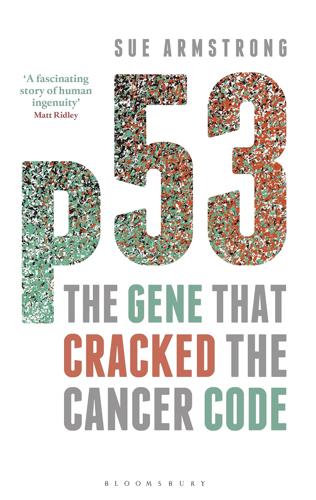
P53: The Gene That Cracked the Cancer Code
by
Sue Armstrong
Published 20 Nov 2014
We got to repeat people’s experiments from the literature and even try some new things. People stayed in the lab late at night; she had us over to her house to talk, and what did we talk about? We talked about science! It was terrifically infectious for me. This was probably 1959 – only six years after Watson and Crick and their discovery of DNA structure. So the molecular biology revolution was just starting.’ Levine began his career studying how viruses replicate themselves – essentially by taking over the machinery of the host cell to do so, because they are parasites that cannot function outside of other living things, be they plant or animal.
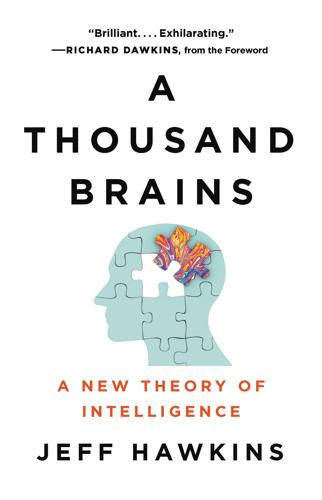
A Thousand Brains: A New Theory of Intelligence
by
Jeff Hawkins
Published 15 Nov 2021
But, as far as I know, Mountcastle was the first person to clearly and carefully lay out the argument for a common cortical algorithm. Mountcastle’s and Darwin’s proposals differ in one interesting way. Darwin knew what the algorithm was: evolution is based on random variation and natural selection. However, Darwin didn’t know where the algorithm was in the body. This was not known until the discovery of DNA many years later. Mountcastle, by contrast, didn’t know what the cortical algorithm was; he didn’t know what the principles of intelligence were. But he did know where this algorithm resided in the brain. So, what was Mountcastle’s proposal for the location of the cortical algorithm? He said that the fundamental unit of the neocortex, the unit of intelligence, was a “cortical column.”
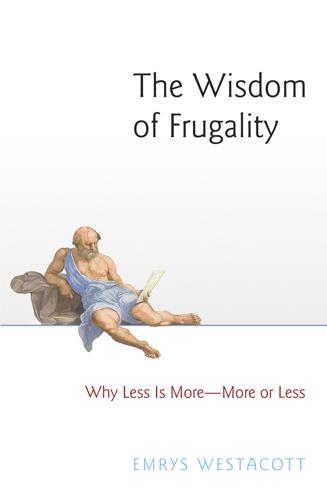
The Wisdom of Frugality: Why Less Is More - More or Less
by
Emrys Westacott
Published 14 Apr 2016
Yet it is striking that a humble activity like picking blackberries—the subject of well-known poems by, among others, Sylvia Plath, Seamus Heaney, and Richard Wilbur—appears to be more inspirational to modern poets, more charged with interest and significance, than, say, the construction of the world’s tallest building, the Oscar ceremonies, the space program, or the discovery of DNA’s molecular structure. One might even say that it has now become an established function of art to help us discover the remarkable in the commonplace. This, after all, is one effect of art that uses “found objects,” such as Duchamp’s sculpture Bicycle Wheel in which a bicycle wheel is mounted above a wooden stool.
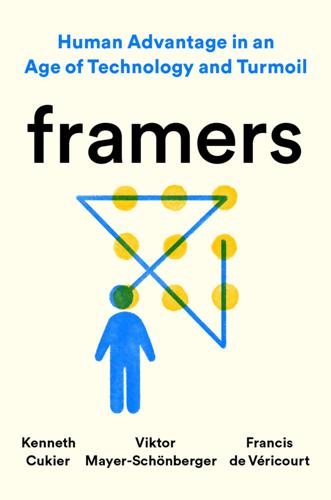
Framers: Human Advantage in an Age of Technology and Turmoil
by
Kenneth Cukier
,
Viktor Mayer-Schönberger
and
Francis de Véricourt
Published 10 May 2021
On being open-minded and curious: A good resource is David Epstein, Range: Why Generalists Triumph in a Specialized World (New York: Riverhead, 2019). On Rousseau’s social contract: Jean-Jacques Rousseau, The Social Contract, trans. Maurice Cranston (Harmondsworth, UK: Penguin, 1968). On the discovery of DNA’s structure: James Watson, The Double Helix: A Personal Account of the Discovery of the Structure of DNA (New York: Athenaeum, 1968). See also: “The Answer,” Linus Pauling and the Race for DNA, Oregon State University Libraries, accessed November 10, 2015, http://scarc.library.oregonstate.edu/coll/pauling/dna/narrative/page30.html.
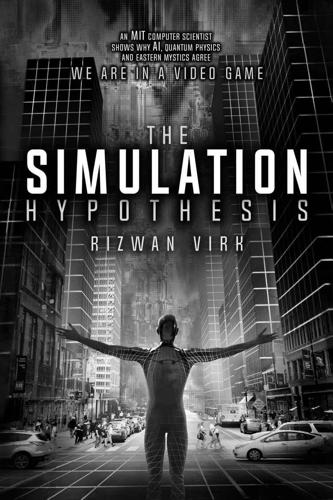
The Simulation Hypothesis
by
Rizwan Virk
Published 31 Mar 2019
Nature as a 3D Printer of Biological Material One thing we haven’t been able to print (yet) are organic materials, which contain carbon, the basic building block of life. An organic 3D printer is not as far off as we might think, and it could be used to print organs or, in the case of some science fiction-like scenarios, actual living organisms. The discovery of DNA and genes, which were theorized long before physical genes were found, seemed to reveal that the building blocks of living things are, in fact, also based on information. The information in DNA in the form of genes acts as instructions for the body of the organism to build proteins, which are the building blocks of the cells in the body.
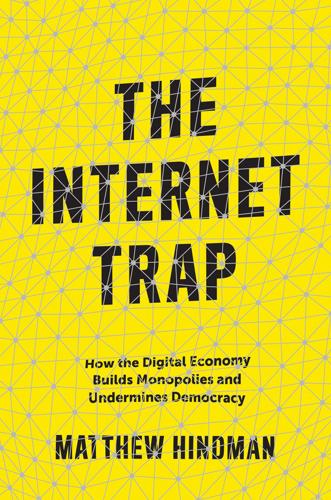
The Internet Trap: How the Digital Economy Builds Monopolies and Undermines Democracy
by
Matthew Hindman
Published 24 Sep 2018
For convenience we will term this model audience selection, after natural selection in biology. The label of audience selection may sound empowering, even meritocratic. But in fact, audiences rarely get to choose among many equally good options. Darwin’s account left out many key details, and indeed it was written a century before the discovery of dna. But it still carried enormous power to connect macroscale biology—species and ecosystems—with the pressures on individual organisms. In Darwin’s account, his eureka moment came while reading Thomas Malthus. Malthus argued that society is doomed to outstrip its food supply because human population grows geometrically.
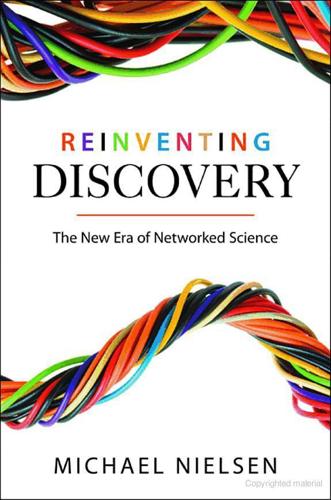
Reinventing Discovery: The New Era of Networked Science
by
Michael Nielsen
Published 2 Oct 2011
p 79: Regarding the rapid acceptance of Einstein’s ideas, it helped that leading scientists such as Lorentz and Poincaré arrived at similar conclusions at about the same time. But although Einstein’s formulation of relativity was even more radical than the formulations of Lorentz and Poincaré, it quickly became accepted as the correct way to think about relativity. p 79: On the discovery of DNA, and Pauling’s error, see Watson’s memoir, The Double Helix [234]. p 80 “If Feynman says it three times, it’s right”: [72]. p 84: My thanks to Mark Tovey for help constructing this example on optical illusions and cognitive science. p 85: On collaboration markets, see also [246] and [146].

Everything Is Obvious: *Once You Know the Answer
by
Duncan J. Watts
Published 28 Mar 2011
Ultimately, we will probably need to pursue all these approaches simultaneously, attempting to converge on an understanding of how people behave and how the world works both from above and from below, bringing to bear every method and resource that we have at our disposal. It sounds like a lot of work, and it will be. But as Merton noted four decades ago, we have done this kind of thing before, first in physics and then in biology and then again in medical science. Most recently, the genomics revolution that began more than fifty years ago with the discovery of DNA has long promised more in the way of medical treatments than it has been able to deliver; yet that hasn’t stopped us from devoting enormous resources to the pursuit of science.26 Why should the science required to understand social problems such as urban poverty or economic development or public education deserve less attention?
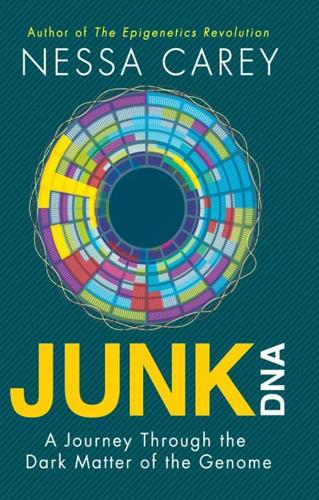
Junk DNA: A Journey Through the Dark Matter of the Genome
by
Nessa Carey
Published 5 Mar 2015
For instance, the neurons in the brain express the receptors for neurotransmitters but switch off the genes for haemoglobin, the pigment that carries oxygen in our red blood cells. These are all examples of situations we have referred to for decades as epigenetic phenomena. Yes, exactly the same word as for the modifications, and it makes sense. These are all situations where something else is happening in addition to, or as well as, the genetic code. The discovery of DNA methylation finally gave us a mechanism to understand how epigenetic phenomena happen. In a neuron, the genes responsible for producing haemoglobin become heavily methylated and are switched off. They stay switched off through life. In the cells that give rise to red blood cells, however, these genes are not methylated and haemoglobin is created.

Physics in Mind: A Quantum View of the Brain
by
Werner Loewenstein
Published 29 Jan 2013
Digital demons, 127, 128 plants and, 128–130 rise of, 127–128 Digital electrical signals evolutionary beginning of, 35, 36 generation of, 54–56, 88, 127, 210, 211, 212n, 213, 278 synchronization of, 222 Diodes, tunnel, 103 Dipoles, 40 (fig.), 63 (fig.), 69, 70, 97 Dirac, Paul, 153, 241 Disparity, visual, 176–178, 179 Distributed coding, 200–202, 273 Distributive law of coding, 61 Divergent mapping, 92 (fig.), 98 DNA (deoxyribonucleic acid) compounded scripts of, 113 discovery of DNA structure as an example of sensory transcendence, 152–153 error suppressing loops in information transmission to protein, 111–112, 113n, 114 human and mouse scripts, 115 large-scale rearrangements in, 118–121 mutations of, 109–113, 115, 117 number of genes contained in, 91 number of odor-sensing genes in, 89 Dowling, John E., 281 Dyson, F.
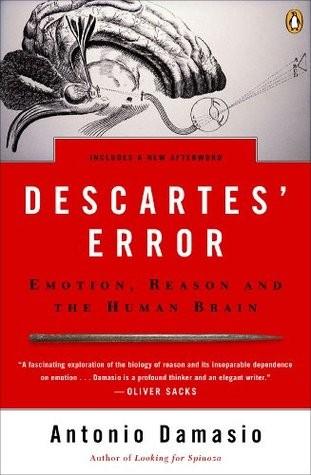
Descartes' Error: Emotion, Reason and the Human Brain
by
António R. Damásio
Published 1 Jan 1994
But other work can be carried out only in humans, with the appropriate ethical cautions and limitations, and the pace must be slower. Some have asked why neuroscience has not yet achieved results as spectacular as those seen in molecular biology over the past four decades. Some have even asked what is the neuroscientific equivalent of the discovery of DNA structure, and whether or not a corresponding neuroscientific fact has been established. There is no such single correspondence, although some facts, at several levels of the nervous system, might be construed as comparable in practical value to knowing the structure of DNA—for instance, understanding what an action potential is all about.
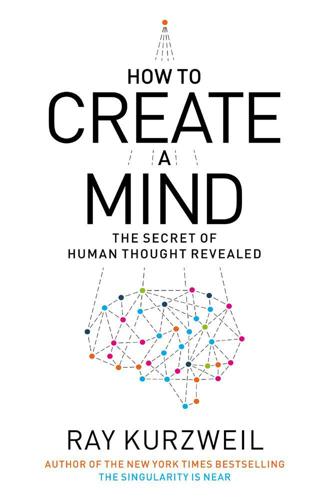
How to Create a Mind: The Secret of Human Thought Revealed
by
Ray Kurzweil
Published 13 Nov 2012
H. C. Crick, “A Structure for Deoxyribose Nucleic Acid,” Nature 171 (1953): 737–38, http://www.nature.com/nature/dna50/watsoncrick.pdf and “Double Helix: 50 Years of DNA,” Nature archive, http://www.nature.com/nature/dna50/archive.xhtml. 6. Franklin died in 1958 and the Nobel Prize for the discovery of DNA was awarded in 1962. There is controversy as to whether or not she would have shared in that prize had she been alive in 1962. 7. Albert Einstein, “On the Electrodynamics of Moving Bodies” (1905). This paper established the special theory of relativity. See Robert Bruce Lindsay and Henry Margenau, Foundations of Physics (Woodbridge, CT: Ox Bow Press, 1981), 330. 8.
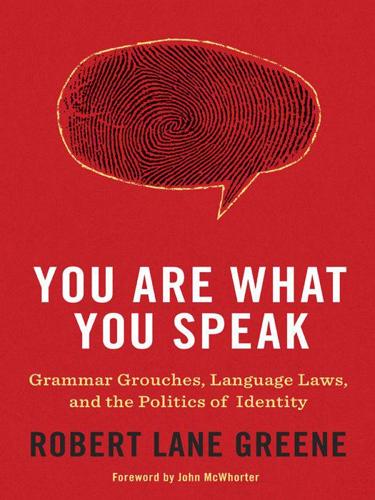
You Are What You Speak: Grammar Grouches, Language Laws, and the Politics of Identity
by
Robert Lane Greene
Published 8 Mar 2011
Beginning in the middle of the last millennium, the European powers became the world’s undeniable masters of technology and modern development. Later, their New-World offspring, and especially the United States, would join them in global dominance. From ocean-crossing vessels to railroads, from the telegraph to the telephone, from radio to television to the Internet, from the discovery of oxygen to the discovery of DNA, countries speaking European languages led the way in the world’s modernization. This was unsatisfactory for two other kinds of societies. Postcolonial states born in the twentieth century wanted to show the world that they were every bit as sovereign as the countries that had formerly defeated, dominated, or colonized them.

Beyond: Our Future in Space
by
Chris Impey
Published 12 Apr 2015
He overate, told off-color jokes, and did his best work in noisy and chaotic environments. In the 1940s, von Neumann figured out the logical requirements for self-replication. He described a computational “machine” that could make copies of itself, allow for errors, and evolve. This remarkable work preceded computers and anticipated the later discovery of DNA and the mechanisms of life. His work was theoretical, but it created a roadmap for building actual self-replicating machines.24 Perhaps this is the way we will eventually explore the galaxy. Diffusing through interstellar space and exploring distant worlds with a fleet of self-replicating probes sounds fantastical, but it could be achieved with a reasonable extrapolation of our current technology.

Vaxxers: The Inside Story of the Oxford AstraZeneca Vaccine and the Race Against the Virus
by
Sarah Gilbert
and
Catherine Green
Published 7 Jul 2021
Dr Cath Green is Associate Professor in Chromosome Dynamics at the Wellcome Centre for Human Genetics, a Senior Research Fellow at Exeter College, and Head of Oxford University’s Clinical BioManufacturing Facility. As a specialist in manufacturing vaccines for clinical trials, she is an integral part of the Oxford Vaccine project. ‘This is one of the most epic and pioneering moments in human history, comparable to the race to put a man on the moon, the discovery of DNA, or the first ascent of Everest. The Oxford AstraZeneca vaccine is a triumph and its creators are life savers. Science is the exit strategy, as long as we make that science equitably available to the world – as all the incredible people behind the Oxford AstraZeneca vaccine always intended. Truly the “People’s Vaccine”.’
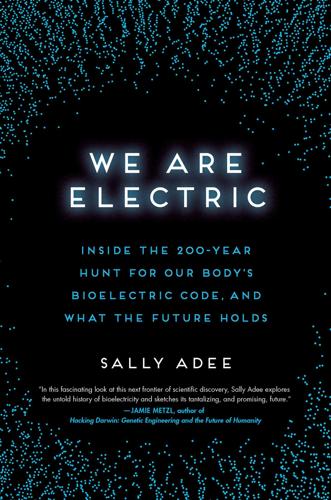
We Are Electric: Inside the 200-Year Hunt for Our Body's Bioelectric Code, and What the Future Holds
by
Sally Adee
Published 27 Feb 2023
Just when animal electricity should have taken the spotlight once more, a cloud passed over the sun. No sooner had Hodgkin and Huxley revealed the elusive mechanism of the nerve impulse, than two other young researchers stole the show with a discovery deemed far more monumental: the double helix. In 1953, James Watson and Francis Crick—and Rosalind Franklin—unveiled their discovery of DNA. “There are only molecules. Everything else is sociology,” Watson pronounced,10 and the importance of bioelectricity was sidelined by a “bigger” discovery once again, just as it had been after Galvani. Hodgkin and Huxley had shown that an action potential depends crucially on a cell holding tight to potassium and expelling sodium.
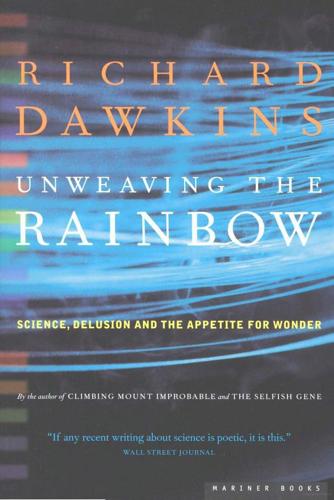
Unweaving the Rainbow
by
Richard Dawkins
Published 7 Aug 2011
Audience members pointed out that the experimental method is the brainchild of white Victorian males.' Carrying conciliation to what would have seemed to me almost superhuman lengths, Ellsworth agreed that white males had done their share of damage in the world but noted that, none the less, their efforts had led to the discovery of DNA. This earned the incredulous (and incredible) retort: 'You believe in DNA?' Fortunately, there are still many intelligent young women prepared to enter a scientific career, and I should like to pay tribute to their courage, in the face of uncouth bullying of this kind. Of course a form of feminist influence in science is admirable and overdue.

The Cancer Chronicles: Unlocking Medicine's Deepest Mystery
by
George Johnson
Published 26 Aug 2013
[http://www.sciencemag.org/content/66/1699/84.short] 2. discovered in his monastery garden: An English translation of Gregor Mendel’s landmark paper, “Experiments in Plant Hybridization” (1865), can be found online at MendelWeb. [http://www.mendelweb.org/Mendel.html] 3. That kind of clarity: The experiments by Avery, Hershey, and Chase, and the discovery of DNA’s double-helical structure, are described in Horace Freeland Judson’s The Eighth Day of Creation: Makers of the Revolution in Biology, expanded ed. (Cold Spring Harbor, NY: Cold Spring Harbor Laboratory Press, 1996). The seminal papers include Oswald T. Avery, Colin M. MacLeod, and Maclyn McCarty, “Studies on the Chemical Nature of the Substance Inducing Transformation of Pneumococcal Types,” The Journal of Experimental Medicine 79, no. 2 (February 1, 1944): 137–58 [http://www.ncbi.nlm.nih.gov/pmc/articles/PMC2135445]; A.
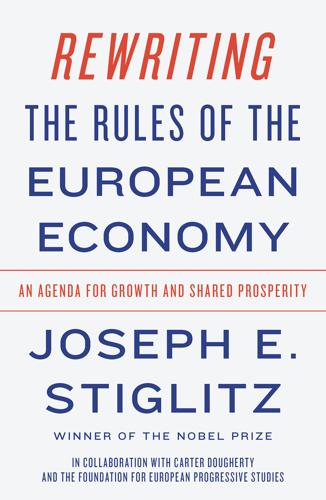
Rewriting the Rules of the European Economy: An Agenda for Growth and Shared Prosperity
by
Joseph E. Stiglitz
Published 28 Jan 2020
“If I have seen further, it is by standing on the shoulders of giants,” Isaac Newton famously wrote. Many of today’s intellectual property laws make these metaphorical “shoulders” off-limits, by forbidding not only profit from another’s innovation but also any research based on it (at least not without providing compensation). Think of all the research that has been based on the discovery of DNA. Imagine how subsequent research would have been impeded if Watson and Crick had barred the use of what they learned or had charged a high fee for its use. Innovation can also be mired in conflicting patent claims. In the field of technology, innovators often have to wade through what has come to be called a patent thicket.

The Deep Learning Revolution (The MIT Press)
by
Terrence J. Sejnowski
Published 27 Sep 2018
Playing the Long Game The commercialization of technology developed by basic science research typically takes about fifty years. The great discoveries that were made in relativity and quantum mechanics during the first decade of the twentieth century gave rise to CD players, GPS, and computers in the second half of that century. The discovery of DNA and the genetic code in the 1950s gave rise to applications in medicine and agribusiness that are having an economic impact today. The basic discoveries that the BRAIN Initiative and other brain research programs around the world are making today will lead to applications fifty years from now that would be considered science fiction today.13 We can expect AIs to have operating systems comparable to the one in our brain by 2050.

Rage Inside the Machine: The Prejudice of Algorithms, and How to Stop the Internet Making Bigots of Us All
by
Robert Elliott Smith
Published 26 Jun 2019
Guardian, www.theguardian.com/commentisfree/2016/nov/23/ai-apocalypse-facebook-algorithms 6These contributions include ‘von Neumann entropy’, and it was in fact von Neumann who suggested the metaphorical name ‘entropy’ to Shannon as he developed information theory. 7It is now widely recognized that female scientist Rosalind Franklin deserves credit along with Watson and Crick for the discovery of DNA. 8G.E.P. Box and N.R. Draper, 1969, Evolutionary Operation: A Statistical Method for Process Improvement. New York: Wiley. 9Kenneth De Jong, David Fogel and Hans-Paul Schwefel, 1997, A History of Evolutionary Computation. In T. Bäck, D.B. Fogel and Z. Michalewicz (eds) Handbook of Evolutionary Computation.
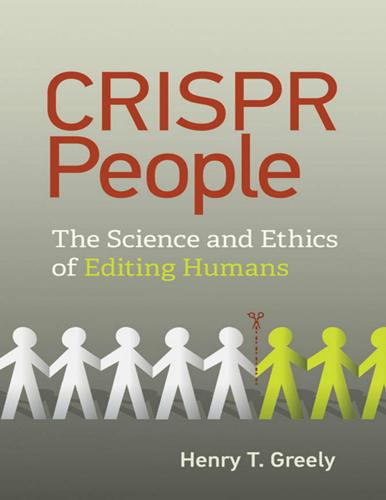
CRISPR People: The Science and Ethics of Editing Humans
by
Henry T. Greely
Published 22 Jan 2021
This chapter looks at those discussions up to the disclosure of He’s experiment, in two parts: the early discussions of recombinant DNA technology, notably at the famous Asilomar Conference, and the more focused discussions after the development of CRISPR as a genome editing system. Along the way, it takes a look at some of the people, “CRISPR people,” although not “CRISPR’d people,” who were involved. Asilomar and the Ethics of Recombinant DNA Before the realization that DNA was the basis for human genetic inheritance and the knowledge, with Watson and Crick’s discovery of DNA’s structure, of the importance of DNA sequence, the discussion would not have been of “editing,” as the analogy between the genome and a book (or a blueprint) did not exist. But even after Watson and Crick, and after the working out during the 1960s of how DNA in the genome “coded for” the amino acids of proteins, the discussion remained abstract.
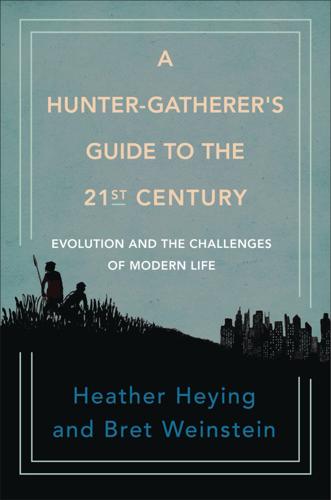
A Hunter-Gatherer's Guide to the 21st Century: Evolution and the Challenges of Modern Life
by
Heather Heying
and
Bret Weinstein
Published 14 Sep 2021
* * * — Following the discovery of the DNA double helix, there emerged a conflation of “evolutionary” traits with “genetic” traits. The terms evolutionary and genetic began to be used interchangeably, which made it more and more difficult, over time, to talk about evolutionary change that was not genetic. Darwin, had he been aware of Gregor Mendel’s work with peas, or had he been around to see the discovery of DNA, would have been pleased to know a mechanism of adaptation by natural selection, but he would not, we believe, have assumed that this was the only such mechanism. The conflation of evolutionary with genetic traits became entrenched in popular culture, as in the specious dichotomy of “nature versus nurture.”

Boom: Bubbles and the End of Stagnation
by
Byrne Hobart
and
Tobias Huber
Published 29 Oct 2024
The project, which cost $3 billion, was one of the largest engineering undertakings since NASA’s Apollo program. Unsurprisingly, the Human Genome Project also exhibited a bubble dynamic, driven as it was by an ambitious vision and characterized by excessive government overinvestment. 383 For Sinsheimer, the discovery of DNA and the rise of genetic engineering enabled humans to unlock the sacred code of life itself. “When Galileo discovered that he could describe the motions of objects with simple mathematical formulas, he felt that he had discovered the language in which God created the universe,” he wrote. “Today we might say that we have discovered the language in which God created life.” 384 Similarly, the director of the Human Genome Project, Francis Collins, a devout Christian, stated that his “work of discovery” is a “form of worship.” 385 Genetic engineering, for many practitioners, resembles a form of divine knowledge, enabling mere mortals with finite knowledge to enhance our image-likeness of God.
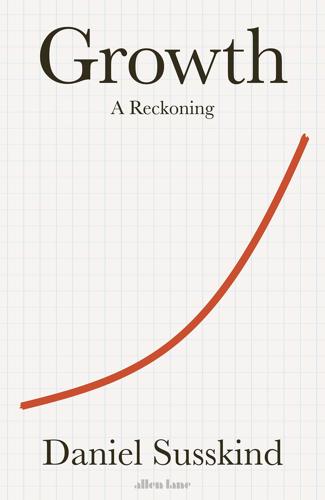
Growth: A Reckoning
by
Daniel Susskind
Published 16 Apr 2024
Each of these breakthroughs would have been impossible without the material prosperity required to pay for their development and put them to widespread practical use.26 But each of them would also have been unimaginable without the triumph of science over superstition. Medical progress, from the invention of germ theory to the discovery of DNA, requires a rational and enlightened population to carry it out. And this is another big benefit to growth: that richer countries tend to be far better educated. In countries with higher GDP per capita, for instance, people spend more time in school and do better there. For this reason, it is no surprise that, as the world has got richer, reversals have taken place in the collective ignorance of humankind.

The Evolution of Everything: How New Ideas Emerge
by
Matt Ridley
He shows that there are numerous such mountains – different kinds of eyes in different kinds of animal, from the compound eyes of insects to the multiple and peculiar eyes of spiders – each with a distinct range of partially developed stages showing how one can go step by step. Computer models confirm that there is nothing to suggest any of the stages would confer a disadvantage. Moreover, the digitisation of biology since the discovery of DNA provides direct and unambiguous evidence of gradual evolution by the progressive alteration of the sequence of letters in genes. We now know that the very same gene, called Pax6, triggers the development of both the compound eye of insects and the simple eye of human beings. The two kinds of eye were inherited from a common ancestor.

Machine, Platform, Crowd: Harnessing Our Digital Future
by
Andrew McAfee
and
Erik Brynjolfsson
Published 26 Jun 2017
No, it’s not, but it needs to be modernized. Eighty years of research has built on and enhanced Coase’s findings since “The Nature of the Firm” appeared. Continuing to rely on it alone is a bit like treating Gregor Mendel’s mid-nineteenth-century work as the last word on genetics and ignoring Watson and Crick, the discovery of DNA, and everything that came after. No Matter How Smart They Get, Contracts Will Still Be Incomplete Of the many elaborations of TCE, those that are most relevant here are the concepts of incomplete contracts and residual rights of control. In pathbreaking work, Sandy Grossman and Oliver Hart asked, “What rights does the owner of a firm have that a non-owner doesn’t?”
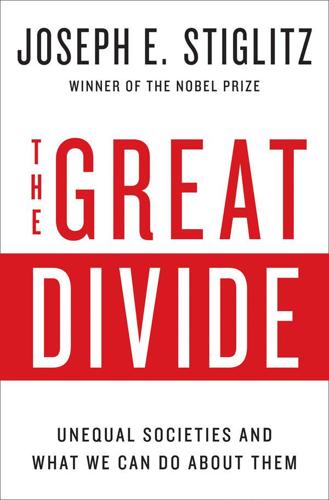
The Great Divide: Unequal Societies and What We Can Do About Them
by
Joseph E. Stiglitz
Published 15 Mar 2015
So it stands to reason that intellectual property regimes that create monopoly rents that impede access to health both create inequality and hamper growth more generally. There are alternatives. Advocates of intellectual property rights have overemphasized their role in promoting innovation. Most of the key innovations—from the basic ideas underlying the computer, to transistors, to lasers, to the discovery of DNA—were not motivated by pecuniary gain.They were motivated by the quest for knowledge. Of course, resources have to be made available. But the patent system is only one way, and often not the best way, of providing these resources. Government-financed research, foundations, and the prize system (which offers a prize to whoever makes a discovery, and then makes the knowledge widely available, using the power of the market to reap the benefits) are alternatives, with major advantages, and without the inequality-increasing disadvantages of the current intellectual property rights system.
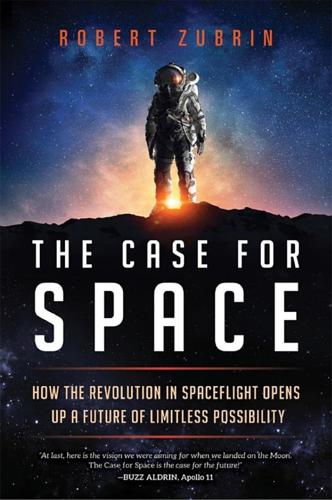
The Case for Space: How the Revolution in Spaceflight Opens Up a Future of Limitless Possibility
by
Robert Zubrin
Published 30 Apr 2019
Their ancestors pioneered the early Earth, and they retain some of the necessary skills, but they are by no means the ideal candidates for pioneering new worlds. However, since the domestication of the dog, twenty thousand years ago, humans have practiced modification of other species to meet our needs, primarily through the practice of selective breeding. In recent years, a series of advances—first the development of genetics, then the discovery of DNA, and now the actual reading of the genetic code and mastery of recombinant DNA techniques—has enormously expanded our abilities in this area. As a result, it will soon be within our capabilities to design ideal pioneering microorganisms and ultraefficient plants well suited to transform a wide variety of extraterrestrial environments.
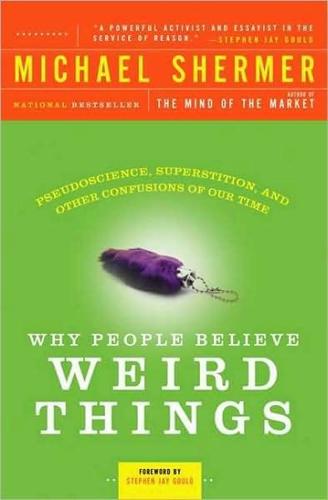
Why People Believe Weird Things: Pseudoscience, Superstition, and Other Confusions of Our Time
by
Michael Shermer
Published 1 Jan 1997
One can find to the literature such ideological terms as "oppressive," "sexist," "imperialist," "capitalist," "control," and "order" being attached to physical concepts as DNA, genetics, biochemistry, and evolution. The nadir of this secular form of creationism came at a 1997 interdisciplinary conference in which a psychologist was defending science against a beating by science critics by praising the advances in modern genetics, beginning with the 1953 discovery of DNA, He was asked rhetorically: "You believe in DNA?" Certainly this is about as ridiculous as it gets, yet I can understand the concerns of the left, given the checkered history of abuse of evolutionary theory in general, and eugenics in particular. I am equally horrified at how some people have used Darwin to control, subjugate, or even destroy others.
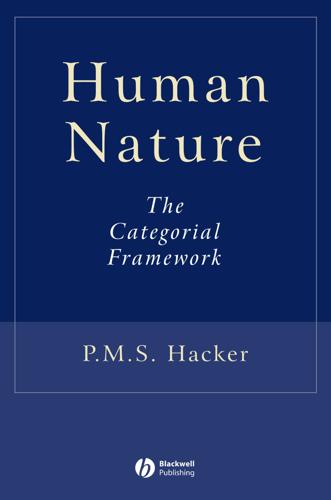
Human Nature: The Categorial Framework
by
P. M. S. Hacker
Published 19 Aug 2007
It is rooted in Locke’s distinction between real and nominal essence but, unlike Locke, holds the real essence of a thing to be both discoverable and partly constitutive of the meaning of its name. It draws support from the discovery of the periodic table of elements, and, even more questionably, from the discovery of DNA and its genetic role. It is doubtful whether the categories found to be useful in the natural sciences are themselves natural kind terms thus understood. For this conception of natural kinds is a metaphysical rather than a scientific one, rooted in a form of metaphysical essentialism, on the one hand, and misconceptions concerning meaning and explanation, on the other.9 It is an illusion that scientific discovery can disclose what the words we use, such as ‘gold’ and ‘water’, ‘fish’ and ‘lily’, really mean.
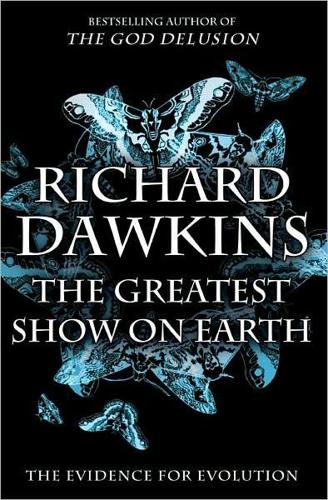
The Greatest Show on Earth: The Evidence for Evolution
by
Richard Dawkins
Published 21 Sep 2009
If, say, some weird, anomalous microbes called the harumscaryotes were discovered, which didn’t use DNA at all, or didn’t use proteins, or used proteins but strung them together from a different set of amino acids from the familiar twenty, or which used DNA but not a triplet code, or a triplet code but not the same 64-word dictionary – if any of these conditions were met, we might suggest that life had originated twice: once for the harumscaryotes and once for the rest of life. For all Darwin knew – indeed, for all anyone knew before the discovery of DNA – some existing creatures might have had the properties I have here attributed to the harumscaryotes, in which case his ‘into a few forms’ would have been justified. Is it possible that two independent origins of life could both have hit upon the same 64-word code? Very unlikely. For that to be plausible, the existing code would have to have strong advantages over alternative codes, and there would have to be a gradual ramp of improvement towards it, a ramp for natural selection to climb up.

Them And Us: Politics, Greed And Inequality - Why We Need A Fair Society
by
Will Hutton
Published 30 Sep 2010
Moreover, an Italian immigrant called Antonio Meucci had declared his invention of a ‘voice telegraphy device’ fully five years earlier, but he had lacked the $10 that was required to register his work. So the telephone would surely have arrived with or without Bell, because the sum of intelligence in the mid-1870s could clearly deliver it. The same could be said of the theory of natural selection, the discovery of DNA’s double helix and even the theory of relativity. Most of the arguments over patents take place because two inventors arrive independently at the same conclusion; and this happens because they both have access to the same stock of knowledge. Obviously, entrepreneurship remains important. Each individual innovator will face specific uncertainties in commercialising his or her innovative advance.

Lifespan: Why We Age—and Why We Don't Have To
by
David A. Sinclair
and
Matthew D. Laplante
Published 9 Sep 2019
If Schrödinger couldn’t exactly answer the question of what life is, his book arguably did everything else but that. It’s credited with being a key influencer of the development of scientific thought in the twentieth century and helped lay the groundwork for the emergence of molecular biology and the discovery of DNA. E. Schrödinger, What Is Life? The Physical Aspect of the Living Cell (Cambridge, UK: Cambridge University Press, 1944). 2. V. L. Schramm and S. D. Schwartz, “Promoting Vibrations and the Function of Enzymes. Emerging Theoretical and Experimental Convergence,” Biochemistry 57, no. 24 (June 19, 2018): 3299–308, https://www.ncbi.nlm.nih.gov/pubmed/29608286. 3.
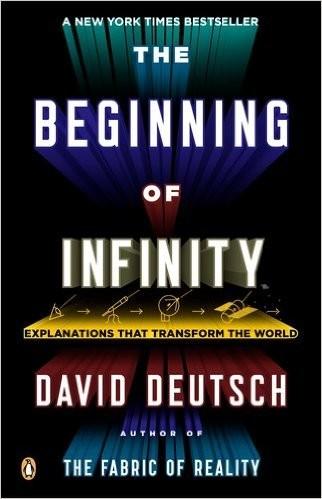
The Beginning of Infinity: Explanations That Transform the World
by
David Deutsch
Published 30 Jun 2011
Is Pluto a ‘real’ planet even though it is smaller than some of the moons in our solar system? Is Jupiter really not a planet but an un-ignited star? It is not important. What is important is what is really there. And memes are really there, regardless of what we call them or how we classify them. Just as the basic theory of genes was developed long before the discovery of DNA, so today, without knowing how ideas are stored in brains, we do know that some ideas can be passed from one person to another and affect people’s behaviour. Memes are those ideas. Another line of criticism is that memes, unlike genes, are not stored in identical physical forms in every holder.
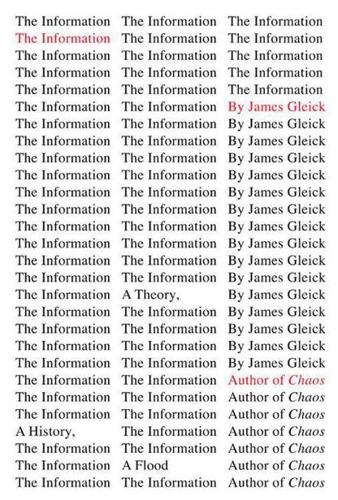
The Information: A History, a Theory, a Flood
by
James Gleick
Published 1 Mar 2011
S., 3.1, 15.1 Elyot, Thomas e-mail, 2.1, 11.1, 11.2, 14.1, 15.1, 15.2, 15.3 Emerson, Ralph Waldo Encyclopaedia Britannica, 7.1, 14.1, 14.2, 14.3, 14.4, epl.1 encyclopedias, prl.1, epl.1, epl.2; see also specific encyclopedia Encyclopédie, 14.1 Enderton, Herbert energy in concept of entropy, 9.1, 9.2, 9.3 cost of information processing, 13.1, 13.2 information and, prl.1, 9.1, 9.2, 9.3, 13.1 Maxwell’s demon, 8.1, 9.1, 9.2, 9.3, 9.4, 9.5, 9.6, 9.7, 9.8, 9.9, 10.1, 13.1, 13.2, 15.1, epl.1 perpetual motion machine, 9.1, 9.2, 9.3 in physics of black holes see also thermodynamics England, 5.1, 5.2, 5.3, 5.4, 5.5, 8.1, 8.2; see also English language English Expositour, An (Bullokar) English language earliest dictionaries, 3.1, 3.2, 3.3, 3.4, 3.5, 3.6, 3.7, 3.8, 3.9, 3.10, 3.11 evolution of, 3.1, 3.2, 3.3 growth of, 3.1, 3.2, 3.3 number of speakers of, 3.1, 3.2, 3.3 Oxford English Dictionary of, 3.1, 3.2, 3.3, 3.4, 3.5, 3.6, 3.7, 3.8, 3.9, 3.10, 3.11 phonemes of, 1.1, 1.2 redundancy in, 1.1, 7.1, 7.2, 8.1, 8.2 spelling of words in, 3.1, 3.2 statistical analysis, 7.1, 7.2, 7.3 use of tonality in vocabulary size English Schoolemaister, The (Coote) ENIAC Enigma code, 7.1, 7.2, 7.3, 7.4 entanglement, prl.1, 1.1, 13.1, 13.2, 13.3, 13.4, 13.5 entelechy entropy, prl.1, 8.1 concept of mind and definition of, 9.1, 9.2, 9.3 as disorder dissipation of energy in, 9.1, 9.2 information as, 7.1, 7.2, 8.1, 9.1, 12.1, 12.2 information to reduce, 9.1, 9.2, 9.3, 9.4, 9.5, 9.6, 9.7 of language mathematical complexity and Maxwell’s demon, 8.1, 9.1, 9.2, 9.3, 9.4, 9.5, 9.6, 9.7, 9.8, 9.9, 10.1, 13.1, 13.2, 15.1, epl.1 measurement of as measure of uncertainty, 9.1, 9.2 movement of universe toward, 9.1, 9.2, 9.3, 9.4 orderliness of biological life and, 9.1, 9.2, 9.3, 9.4 randomness and in thermodynamics of computation Entscheidungsproblem, 7.1, 7.2, 7.3, 7.4 enzymes, 9.1, 10.1, 10.2 Ephrussi, Boris Epimenides’ paradox epistemology erasure of information, 13.1, 13.2, 13.3, 14.1 error correction applications of Shannon’s theories in artillery targeting in early telegraphic code systems, 5.1, 5.2 in genetic code to overcome noise, 7.1, 7.2, 8.1 redundancy for, 7.1, 7.2 in talking drum language in telegraphy errors, in logarithmic tables, 4.1, 4.2 Erya, 3.1 evolution as computational process emergence of global consciousness as gene interactions and, 10.1, 10.2 of genes, 10.1, 10.2 of ideas information processing in role of altruistic behavior in, 10.1, 10.2 evolutionary biology, 10.1, 11.1 Ex-Prodigy (Wiener) Extrapolation, Interpolation, and Smoothing of Stationary Time Series (Wiener, Bigelow) factoring algorithm, 13.1, 13.2 Fano, Robert, 7.1, 7.2, 12.1 Faraday, Michael, 4.1, 5.1, 5.2 feedback, 5.1, 6.1, 8.1, 8.2, 10.1 Feynman, Richard, 9.1, 10.1, 13.1, 13.2, 13.3, 13.4 file storage technology fire beacons fire-control; see antiaircraft guns and artillery FitzRoy, Robert, 5.1, 5.2 Ford, Joseph, 12.1, 12.2 Formal Logic (De Morgan) Foundations of the Theory of Probability (Kolmogorov) Four Great Books of Song, epl.1 France, 3.1, 5.1, 5.2, 5.3, 5.4, 5.5, 5.6, 5.7, 5.8 Frank, Lawrence K., 8.1, 8.2 Franklin, Benjamin Freeman, Thomas, 15.1, 15.2 Freud, Sigmund, 8.1, 9.1 Frost, Robert Fry, Thornton C., 6.1, 6.2 Fuchs, Christopher, 13.1, 13.2, 13.3 Fuchs, Ulrich Gabor, Dennis Galileo, 1.1, 1.2, 3.1 galvanometer, 5.1, 5.2 games, 4.1, 4.2, 4.3, 8.1, 8.2, 8.3, 8.4, 8.5, 8.6 game theory Gamow, George, 10.1, 10.2, 10.3, 10.4, 10.5 Gauss, Carl Friedrich General Electric genetics altruistic behavior and, 10.1, 10.2 aperiodic crystal model of, 9.1, 10.1 coding system, 10.1, 10.2, 10.3, 10.4, 10.5, 10.6, 10.7, 10.8, 10.9, 10.10 development of scientific concepts of, 10.1, 10.2, 10.3, 10.4, 10.5 discovery of DNA, 10.1, 10.2 gene structure and function, 9.1, 9.2, 10.1, 10.2, 10.3, 10.4, 10.5, 10.6, 10.7, 10.8, 10.9, 10.10, 10.11, 10.12, 10.13, 10.14 genome mapping as information science, prl.1, 10.1, 10.2, 10.3, 10.4, 10.5, 10.6, 10.7 information storage in, 7.1, 7.2 memetics and Schrödinger’s formulation of, 9.1, 9.2, 9.3 selfish gene concept, 10.1, 10.2, 10.3, 10.4, 11.1 symbolic logic to describe, 6.1, 6.2, 6.3 Gerard, Ralph, 8.1, 8.2, 8.3, 8.4 Gibbs, Willard Gibson, William Gilgamesh Gilliver, Peter, 3.1, 3.2, 3.3 Glossographia: or a Dictionary (Blount), 3.1, 3.2 Gödel, Kurt, 6.1, 6.2, 6.3, 6.4, 6.5, 6.6, 7.1, 7.2, 7.3, 10.1, 12.1, 12.2, 12.3, epl.1 Gödel’s Proof (Nagel, Newman) Godfather (film) “Gold Bug, The” (Poe) Gongsun Long Google, 11.1, 14.1, 14.2, 15.1, epl.1, epl.2 Gould, Glenn, 12.1, 12.2 Gould, Stephen Jay gravity, 13.1, 13.2, 14.1 Gray, Elisha Great Exhibition of 1851 (London) Great Soviet Encyclopedia, 12.1 Greece, 1.1, 1.2, 2.1, 2.2, 2.3, 2.4, 2.5, 2.6 Grover, Lov Guare, John, epl.1, epl.2 Gutenberg Galaxy (McLuhan) Guyot, Jules Hamilton, W.

Troublemakers: Silicon Valley's Coming of Age
by
Leslie Berlin
Published 7 Nov 2017
Niels Reimers, interview by author, Nov. 5, 2014. 10. All Cohen description from Stanley Cohen, ROHO interview, including the Falkow introduction. 11. Stanford Medical History Flickr photo stream and Stanford Daily, May 1974. 12. Cohen explains in his ROHO interview, “Our discoveries were dependent partly on the earlier discovery of DNA ligase and on ten years of basic research with plasmids.” He specifically cites work by Paul Berg, Dale Kaiser, H. Gobind Khorana, D. A. Jackson, Paul Lobban, Janet Mertz, Vittorio Sgaramella, R. H. Symons, and J. H. van de Sande. 13. Reimers, ROHO interview. 14. Stanford had an institutional patent agreement with the National Institutes of Health that fell under the purview of the Department of Health, Education, and Welfare. 15.

The Transhumanist Reader
by
Max More
and
Natasha Vita-More
Published 4 Mar 2013
Leduc also coined the term “synthetic biology” in 1911 and proposed that this field of study would provide insights into the origins of life and cell organization. Over the twentieth century, research by scientists such as Alexander Oparin and Sidney Fox delved deeper into the search for chemical processes that could have led to the formation of cellular life. However, the discovery of DNA and the new field of biotechnology in the second half of the twentieth century looked to genetics as the key to understanding life. Genetics became the main focus for biological research, though there is much common ground emerging between these scientific fields as researchers are applying their knowledge of the genetic code to create artificial life.
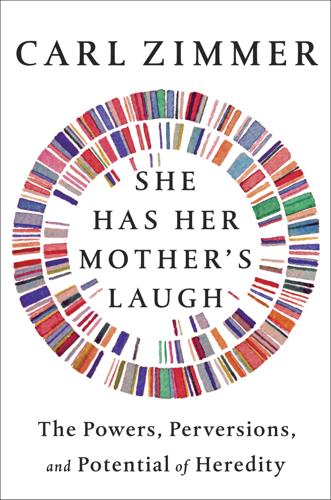
She Has Her Mother's Laugh
by
Carl Zimmer
Published 29 May 2018
A cell carries out a series of chemical reactions to translate a gene’s sequence of bases into a protein. A cell first makes a copy of the gene, creating a single-stranded series of bases called ribonucleic acid, or RNA. That RNA molecule is taken up by a molecular factory called a ribosome, which reads the sequence of RNA and builds a corresponding protein. The discovery of DNA seemed to reduce heredity to a reliably simple recipe. It came down to turning one DNA molecule into a pair. A cell’s molecular machinery pulled apart the two strands of a DNA molecule and then assembled a new strand to accompany each of them. Each base could bond only to one other: A to T, C to G.
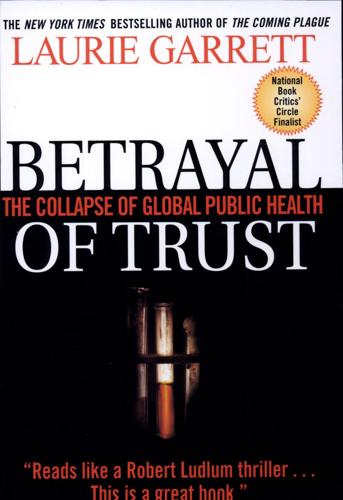
Betrayal of Trust: The Collapse of Global Public Health
by
Laurie Garrett
Published 15 Feb 2000
The number of protein structures we’ll get a year will be measured in the thousands.” The twentieth century began with a revolution sparked by the microscope, which opened humanity’s eyes upon the world of gyrating, fiercely active germs. The Germ Theory was the engine that drove biology for half a century of published health discovery and triumph. With the 1953 discovery of DNA and, perhaps more critically, the early 1970s inventions of genetic engineering techniques, biology entered the Genome Era. As the new century dawned, the Genome Era was passing its baton to the Age of Proteomics, promising an upheaval in pharmaceutics and medicine that proponents argued would be every bit as dramatic as had been Pasteur’s and Koch’s discovery of microbes, Fleming’s finding penicillin, and Salk’s and Sabin’s polio vaccines.

Rationality: From AI to Zombies
by
Eliezer Yudkowsky
Published 11 Mar 2015
One might guess, perhaps, that combustion transformed vital air into fixed air and fuel to ash, and that the ability of this transformation to continue was limited by the amount of vital air available. Lavoisier’s proposal directly contradicted the then-current phlogiston theory. That alone would have been shocking enough, but it also turned out . . . To appreciate what comes next, you must put yourself into an eighteenth-century frame of mind. Forget the discovery of DNA, which occurred only in 1953. Unlearn the cell theory of biology, which was formulated in 1839. Imagine looking at your hand, flexing your fingers . . . and having absolutely no idea how it worked. The anatomy of muscle and bone was known, but no one had any notion of “what makes it go”—why a muscle moves and flexes, while clay molded into a similar shape just sits there.

Europe: A History
by
Norman Davies
Published 1 Jan 1996
Most of the Peninsula’s population can be clearly distinguished from the Mongoloid, Indoid, and Negroid races, but not from other groups predominating in the Near East and North Africa. Some of the most promising advances in the field of prehistory are now being made through modern genetic research. The refinement of serology, the discovery of DNA (1953), and the subsequent operation of mapping the 3,000 million ‘letters’ on human genes permit investigations of a very sophisticated nature. The correlation of genetic and linguistic records now suggests that the patterns of biological and cultural evolution may be closer than imagined. Recent studies show that the movement of genetic material into prehistoric Europe corresponded with parallel cultural trends.